
All categories
Featured selections
Trade Assurance
Buyer Central
Help Center
Get the app
Become a supplier

(45913 products available)


































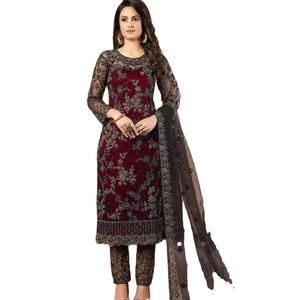
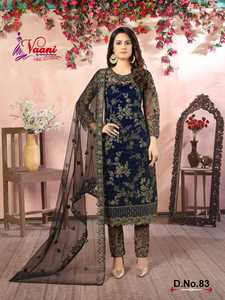
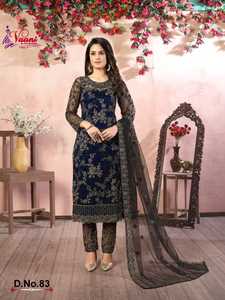
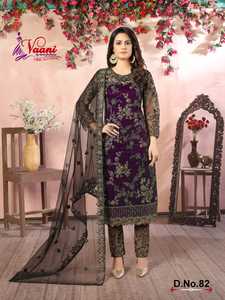
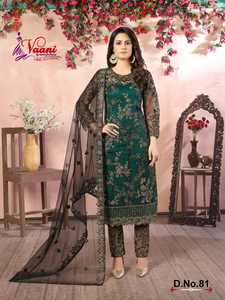






Suit saree designs are the blending of the traditional Indian attire of saree and modern suits. The attire involves draping a saree like a long piece of cloth around the upper half of the body while the lower half is covered by a suit. Here are some types of suit saree designs:
When designing a suit saree, various elements come into play to create a cohesive and aesthetically pleasing garment. One of the primary components is the fabric choice. The fabric selected for the saree can significantly impact its overall look and drape. Common saree fabrics include silk, cotton, chiffon, georgette, and net, each offering different textures and falls. For instance, silk sarees are often chosen for their luxurious feel and rich sheen, making them ideal for festive occasions. In contrast, cotton sarees provide comfort and ease of draping for everyday wear. Chiffon and georgette fabrics are lightweight and flowy, adding a graceful movement to the saree, while net fabrics bring a delicate and airy look with their sheer texture.
The design and pattern of the saree play a crucial role in its aesthetic appeal. Sarees come in a myriad of designs, ranging from traditional motifs to contemporary patterns. Traditional designs may feature intricate zari work, embroidery, block prints, or tie-dye (bandhani) patterns. Zari work involves weaving metallic threads into the fabric, creating stunning gold or silver patterns that shimmer. Embroidery techniques like zardosi, kantha, and chikan work add detailed motifs through hand or machine stitching. Alternatively, contemporary patterns may include floral prints, geometric shapes, abstract designs, or digital prints, catering to modern fashion sensibilities. The pallu (the end portion of the saree that drapes over the shoulder) often features more elaborate designs, adding a focal point to the overall look.
Color schemes are another vital aspect of saree design. The choice of colors can convey different moods and meanings. Vibrant colors like red, royal blue, and emerald green are popular for festive and wedding sarees, symbolizing celebration and grandeur. Pastel shades such as blush pink, mint green, and lavender are favored for their soft and elegant appeal, suitable for daytime events and formal gatherings. Additionally, monochromatic sarees in single colors with contrasting borders and pallus offer a chic and sophisticated look. Color blocking, where the saree is divided into different colored sections, creates a modern and trendy appearance.
The blouse (choli) design significantly impacts the overall look of the suit saree. Blouses can be customized in various styles, including sleeveless, off-shoulder, halter neck, or high-neck designs. Each style offers a different neckline and shoulder appearance, enhancing the saree's overall aesthetic. Embellishments such as sequins, beads, embroidery, and mirror work can be added to the blouse to complement the saree's design. The blouse's fit and style can transform the saree's look, making it more youthful, elegant, or glamorous. Matching or contrasting the blouse fabric with the saree and coordinating its design creates a harmonious and balanced outfit.
Innovative features such as draping styles also add versatility to the suit saree. There are numerous draping techniques, each offering a unique silhouette and style. The classic Nivi drape, which is the most common, involves wrapping the saree around the waist and draping the pallu over the shoulder. However, variations like the Bengali, Gujarati, or Lehenga drapes offer different looks and are influenced by regional traditions. Additionally, modern adaptations like the pant saree, where the saree is paired with trousers instead of the traditional skirt, provide a contemporary twist to the traditional draping method. These draping styles allow for personalization and creativity, enabling individuals to wear the saree in a way that reflects their personality and preferences.
Lastly, accessories play a significant role in complementing the suit saree design. Jewelry such as earrings, necklaces, bangles, and maang tikka (forehead jewelry) can enhance the saree's look and add a touch of elegance. The choice of accessories should complement the saree's color and design to create a cohesive and balanced ensemble. Additionally, accessories like handbags, clutches, and footwear can further personalize the look, allowing for a complete and coordinated outfit.
Saree suits are flexible and can be matched and accessorized in various ways to create different looks. Here are five general tips for wearing and matching saree suits:
Q1: How does one choose the right suit saree design for a particular body type?
A1: Choose a suit saree design that complements the body type. For hourglass figures, fitted suits accentuate the curves. A-line suits are flattering for pear shapes, while empire waist suits work well for apple shapes. Rectangular bodies can benefit from peplum tops to create curves. Choose a saree draping style that further enhances these features.
Q2: What are the latest trends in suit saree designs?
A2: Recent trends include fusion designs that mix Western and Indian styles, such as a blazer with a saree. Sustainability is also a key trend, with more focus on eco-friendly fabrics and techniques. Bold patterns, vibrant colors, and intricate embroidery are also gaining popularity.
Q3: How can one accessorize a suit saree to enhance the overall look?
A3: Accessorize a suit saree with statement jewelry like earrings or a necklace that complements the outfit. Choose the right footwear, such as embellished juttis or heels, to match the saree and suit. A stylish clutch or potli bag can add to the look. Keep accessories balanced to avoid overpowering the outfit.
Q4: What are some tips for draping a saree with a suit for a neat and elegant look?
A4: Start with a well-fitted blouse and drape the saree over the left arm, tucking it into the waistband. Adjust the pleats for evenness and tuck them securely. Drape the remaining length of the saree over the shoulder and adjust for a smooth, draped look. Practice different draping styles to find one that suits best.